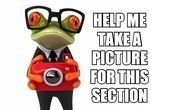The Solar System: What is it; Big Bang Theory; Future
Edited by Jamie (ScienceAid Editor), Taylor (ScienceAid Editor)
Our Solar System
The solar system includes everything that orbits our sun. As well as the 8 planets, there are satellites, asteroids, comets and, dwarf planets. The image below shows planets in their order from the sun. This is not to scale but the relative sizes of each planet is accurate if you double the gas giant's diameters.
Classification of Planets
- 1This is a planet mainly composed of metals or silicate rocks. In our Solar System, the terrestrial planets include the planets closest to the Sun - the inner planets - Mercury, Venus, Earth, and Mars.Terrestrial Planets (Telluric Planet).Advertisement
- 2The four planets beyond the asteroid belt - Jupiter, Saturn, Uranus and Neptune, all have rings, are very large, and are called, The Outer Planets.Outer Planets (Gas Giants).
Asteroid Belt
Also part of our Solar System is the asteroid belt. This is an area between Mars and Jupiter that contains many thousands of asteroids. Asteroids are large pieces of rock, ice and metal that combines are estimated to be 4% of the moon's weight.
Dwarf Planets
Also floating around the solar system are Dwarf Planets. This is a new classification that was introduced in 2006. There are 3 dwarf planets in our solar system.
- 1Ceres is in the asteroid belt.
- 2Pluto, which was a planet for almost 80 years before being reclassified.
- 3Eris is even further out of the solar system than Pluto is.
Gravity
As you will undoubtedly know, gravitational pull is a force that means apples fall to the ground and don't float and that we can stand. However, Earth is not the only planet that has gravity. In fact, everything in the universe has a degree of gravity pulling things towards it. So why don't we bump in to each other? The amount of gravity something has depends upon its mass. The Earth (which is pretty large) exerts an enormous amount of gravity, and therefore, the moon, which is smaller than the earth, is held in the Earth's gravitational pull. On the other hand, the biggest planet in the solar system (Jupiter) has a mass 11 times that of Earth, and so its gravitational pull is 11 times greater. This means any human would be crushed if we were on the planet.
Comets
Comets consists of dust, ice and carbon dioxide. They also orbit the sun, but the orbit is elliptical. The diagram below outlines how the comet orbits the sun.
Put your finger on the screen over the diagram, trace the comet's path by speeding up towards the Sun, until it is catapulted away from the Sun. It then slows down until almost stopping at the right, then the orbit turns and the comet speeds up as it approaches the Sun again.
Following this orbit you will see that the comet spends the majority of its time outside of the Solar System, and it's for this reason that astronomers are so interested in comets: because they only can be seen periodically. The most visible and therefore famous comet is Comet Halley. Halley's Comet, as it's commonly referred to, appears in the solar system every 75 years. It has been mentioned in historical texts for the last 3000 years. An important feature of the comet is the tail. This is dust and gas produced by the heat from the Sun. The tail is always pointed away from the Sun.
Referencing this Article
If you need to reference this article in your work, you can copy-paste the following depending on your required format:
APA (American Psychological Association)
The Solar System: What is it; Big Bang Theory; Future. (2017). In ScienceAid. Retrieved Apr 19, 2024, from https://scienceaid.net/physics/space/solarsystem.html
MLA (Modern Language Association) "The Solar System: What is it; Big Bang Theory; Future." ScienceAid, scienceaid.net/physics/space/solarsystem.html Accessed 19 Apr 2024.
Chicago / Turabian ScienceAid.net. "The Solar System: What is it; Big Bang Theory; Future." Accessed Apr 19, 2024. https://scienceaid.net/physics/space/solarsystem.html.
If you have problems with any of the steps in this article, please ask a question for more help, or post in the comments section below.
Comments
Article Info
Categories : Space
Recent edits by: Jamie (ScienceAid Editor)








